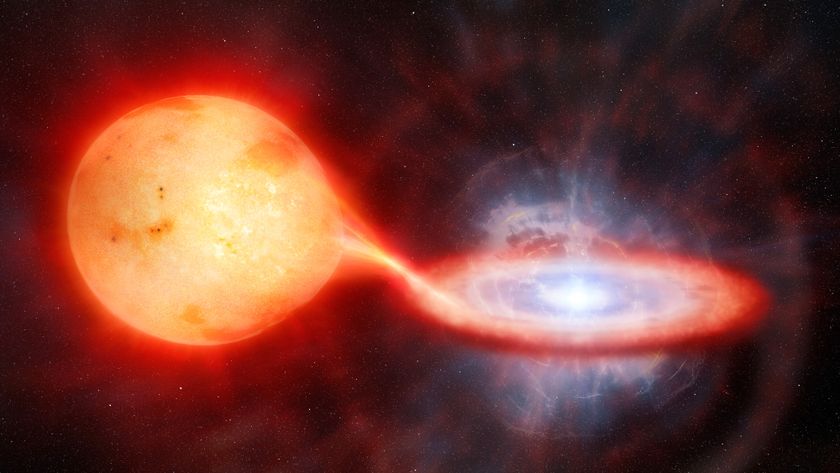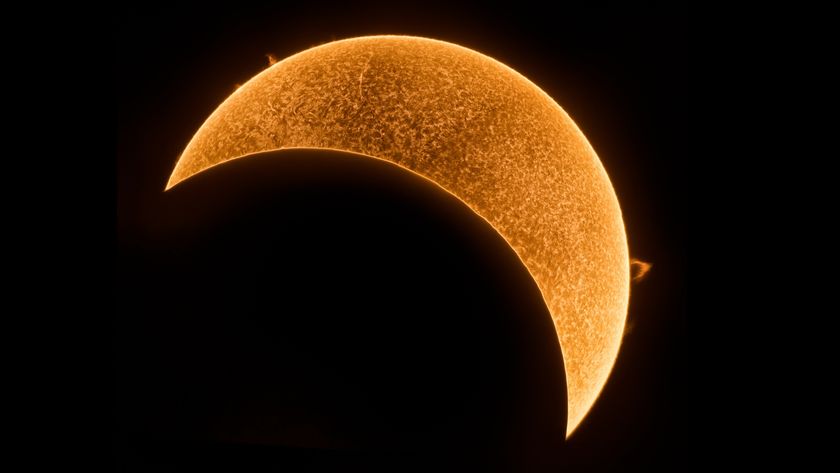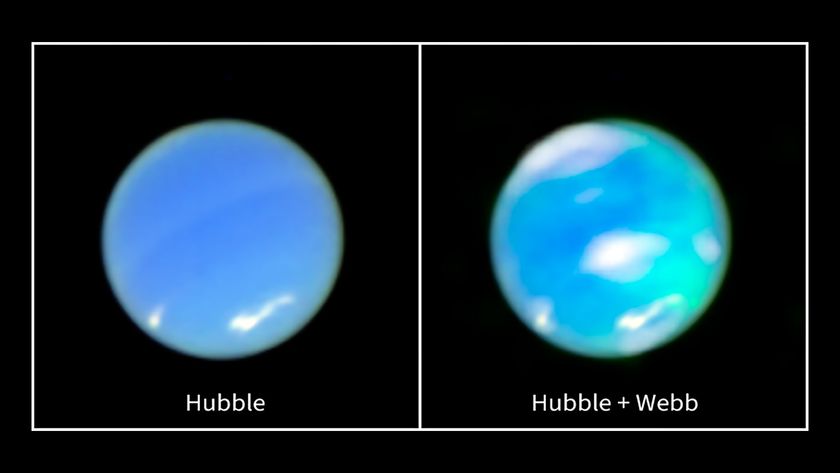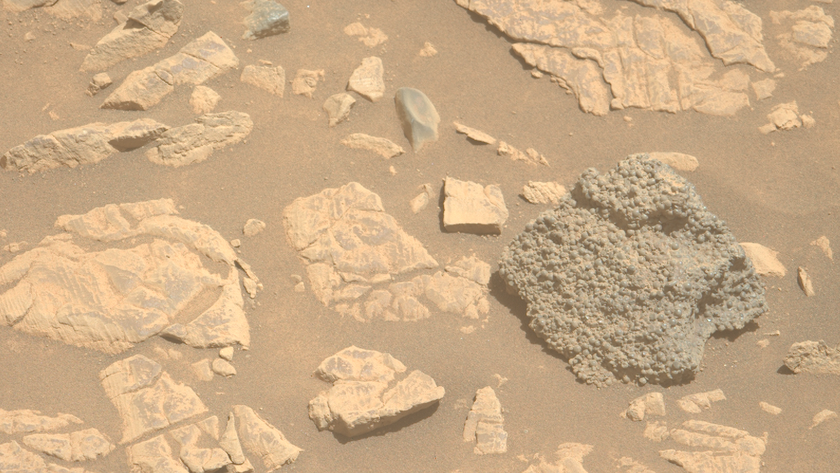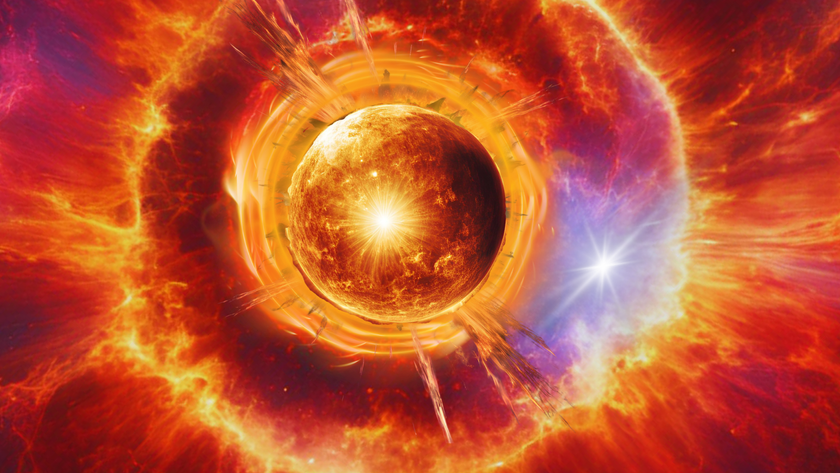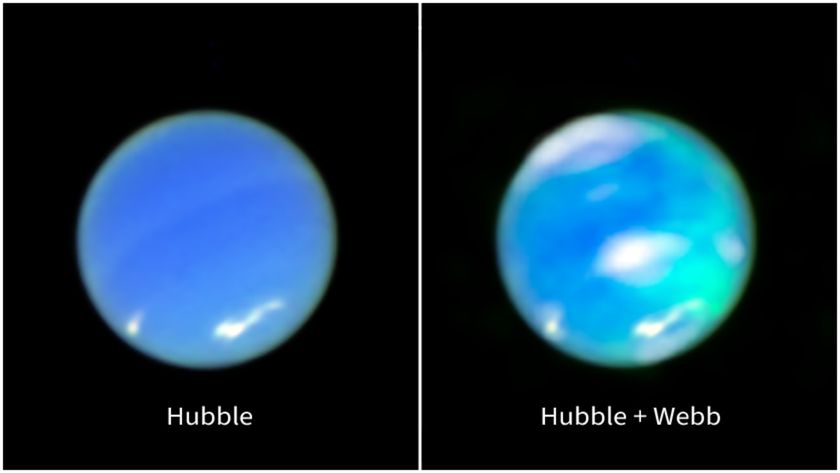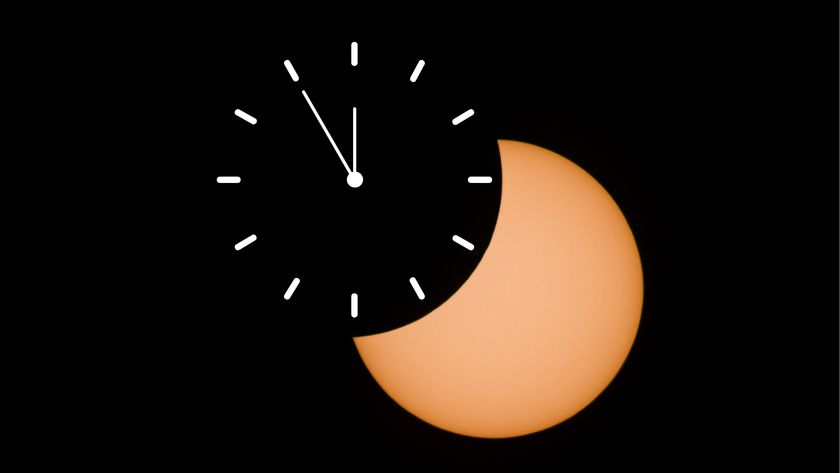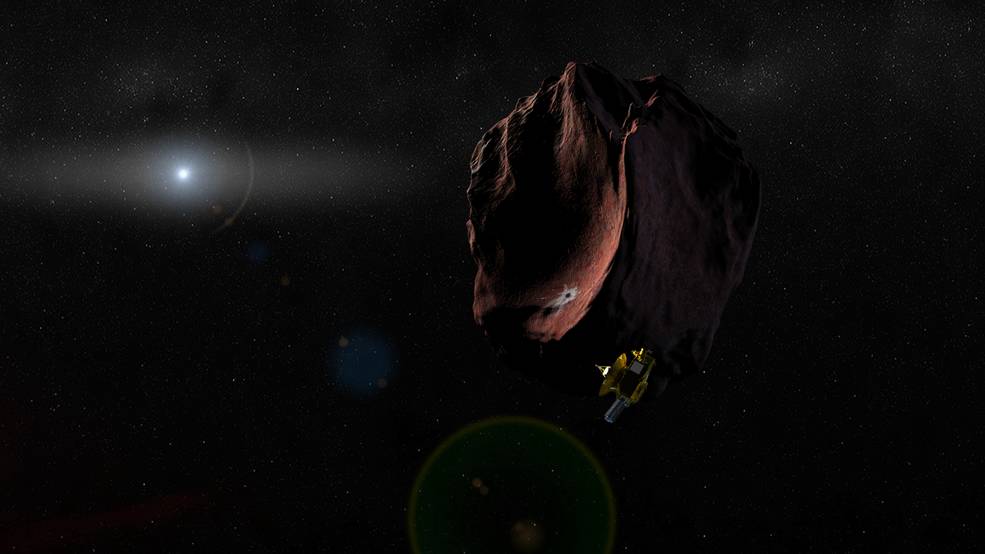
The tiny, faraway object that NASA's New Horizons spacecraft will fly by in 2019 is even redder than Pluto, new observations by the Hubble Space Telescope suggest.
The New Horizons team used Hubble to study 11 objects in the Kuiper Belt, the realm of frigid bodies beyond Neptune's orbit whose most famous resident is Pluto. One of those 11 is 2014 MU69, which New Horizons will zoom past on Jan. 1, 2019.
It turns out that 2014 MU69 "is even redder than Pluto, though not quite as red as Mars," Amanda Zangari, a New Horizons post-doctoral researcher from the Southwest Research Institute in Boulder, Colorado, said today (Oct. 18) during a news conference at a joint meeting of the American Astronomical Society Division for Planetary Sciences and the European Planetary Science Congress in Pasadena, California. [NASA's New Horizons Pluto Flyby in Pictures]
While astronomers have yet to pin down 2014 MU69's size, they believe that it's just 13 to 25 miles (21 to 40 kilometers) wide. 2014 MU69 is now the smallest Kuiper Belt object (KBO) whose color has been measured, Zangari said.
Knowing that 2014 MU69 is reddish does more than just jazz up visualizations of the 2019 flyby, during which New Horizons will zoom within 1,860 miles (3,000 km) of the body's surface. This information strongly suggests that 2014 MU69 is part of the Kuiper Belt's "cold classical" region, which harbors primordial objects that have changed little since the dawn of the solar system nearly 4.6 billion years ago, Zangari said.
"The data confirms that on New Year's Day 2019, New Horizons will be looking at one of the ancient building blocks of the planets," she said in a statement.
The $700 million New Horizons mission launched in January 2006. After more than nine years of spaceflight, the probe performed the first-ever flyby of Pluto on July 14, 2015, coming within 7,800 miles (12,550 km) of the dwarf planet's surface. The encounter revealed Pluto to be a surprisingly complex and active world with a rich diversity of landscapes, from huge water-ice mountains to vast, crater-free plains of nitrogen ice.
Get the Space.com Newsletter
Breaking space news, the latest updates on rocket launches, skywatching events and more!
For the past 15 months, New Horizons has been beaming home the treasure trove of data that it gathered during the July 2015 flyby. But that work is nearly complete: All the flyby measurements and images should be in mission team members' hands by Oct. 23, NASA officials said.
The January 2019 encounter with 2014 MU69, which lies about 1 billion miles (1.6 billion km) beyond Pluto, is part of New Horizons' recently approved extended mission. The spacecraft is currently 600 million miles (960 million km) from 2014 MU69, NASA officials said.
Follow Mike Wall on Twitter @michaeldwall and Google+. Follow us @Spacedotcom, Facebook or Google+. Originally published on Space.com.
Join our Space Forums to keep talking space on the latest missions, night sky and more! And if you have a news tip, correction or comment, let us know at: community@space.com.

Michael Wall is a Senior Space Writer with Space.com and joined the team in 2010. He primarily covers exoplanets, spaceflight and military space, but has been known to dabble in the space art beat. His book about the search for alien life, "Out There," was published on Nov. 13, 2018. Before becoming a science writer, Michael worked as a herpetologist and wildlife biologist. He has a Ph.D. in evolutionary biology from the University of Sydney, Australia, a bachelor's degree from the University of Arizona, and a graduate certificate in science writing from the University of California, Santa Cruz. To find out what his latest project is, you can follow Michael on Twitter.



